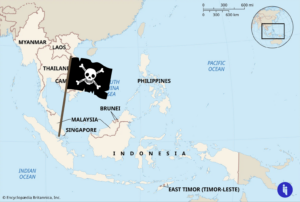Here at Intrigue, we pride ourselves on having a refined sense of humour and the ability to extract the last drop of value from news reserves around the world.
So here are the four oil numbers you need to know:
- 600,000
That’s how many barrels of oil just left Syria’s ports via its first official sale in 14 years. You’ll recall former dictator Al-Assad’s brutal crackdown triggered crippling sanctions that blocked exports until President Trump eased things this June.
Stay on top of your world from inside your inbox.
Subscribe for free today and receive way much more insights.
Trusted by 142,000+ subscribers
No spam. No noise. Unsubscribe any time.
Now of course, 600k barrels won’t make a massive difference to international markets: the Saudis, for example, ship more than 10x that every day. But it’s a massive deal for Free Syria as it attempts to rebuild from the rubble, just as 850,000+ refugees return home.
And Damascus hopes to ramp up further, with talks underway to get oil majors invested — it hopes sharing the spoils might also keep friendly capitals engaged. As opposed to…
- 68%
That’s how much Russian energy giant Rosneft saw its profits decline in the first half of 2025 (yoy), dropping to a paltry $3B. CEO Igor Sechin isn’t afraid to lay blame, including:
- “oversupply”: he’s always been an OPEC sceptic, and blames the cartel’s earlier production cuts (to lift prices) for instead ceding market share to the US. Now he’s unhappy as OPEC rapidly reverses course.
- “significant ruble strengthening”: that’s a dig at Putin’s central bank chief (Nabiullina) who’s hiked rates to 18% to avert a ruble collapse and hose-down 9% inflation — but of course, a stronger ruble is mayhem for exporters like Sechin.
- “tighter EU and US sanction restrictions“: actual production has remained steady, but sanction-imposed discounts are eating Russia’s profits (as intended).
The result is a cash squeeze, exacerbated by Ukraine’s continued hits on refineries, all just as Putin spends more cash to finance his war and energy infrastructure investments.
Sechin’s blame game also hints at the pressures on both Russia’s elites back home and its partnerships abroad (like losing OPEC influence), and he conspicuously avoids mentioning the root cause: Putin’s invasion of Ukraine.
- 700
That’s how many observers witnessed Guyana’s elections on Monday, and oil executives are tuning in for Thursday’s results for three reasons: first, the tiny rainforested nation has been morphing into a petrostate since ExxonMobil’s historic discovery back in 2015.
Second, presidential hopeful Aubrey Norton (President Ali’s main challenger) is now pledging to re-negotiate Guyana’s agreements with ExxonMobil.
And third, execs are also watching for any reaction from neighbouring Venezuela, which sits on the world’s largest oil reserves but still claims two-thirds of Guyana too (including most of the oil). And that’s all while eight US warships float off Venezuela’s coast, prompting more fiery rhetoric from volatile local dictator, Nicolás Maduro.
- Zero
That’s how much analysts expect OPEC to increase output at this Sunday’s meeting. Ie, they’re banking on a pause after OPEC’s recent aggressive ramp-up (per Sechin’s gripes above), allowing markets to absorb added supply before deciding any next steps.
But interestingly, an oil oversupply isn’t yet showing up in the data, as prices still hover around the healthy $70 mark. And there are a couple of interesting geopolitical drivers why: first, markets are still jittery around supply (Russia, Houthis, Iran, etc).
But second (and relatedly), a lot of the increased supply seems to be getting snorted up by the world’s top oil buyer (China), now filling its strategic reserve at double the usual rate. The details are classified, but you can infer what’s going on via other data points.
Inferring motives, however, is trickier — China started this ramp-up back in March when prices dropped, then continued through the Israel-Iran war. But even factoring in the order-delivery lag (plus today’s higher prices), China still seems to be stockpiling oil.
And with each passing week, it raises the likelihood China is not just carpé-ing the diem of low prices, or playing it safe amid Middle East wars — rather, it suggests Beijing also has an eye on emerging risks ahead, including the possibility of wider US sanctions.
Intrigue’s Take
We talk often about our world going multipolar, but today’s briefing is an example of how it’s playing out in energy politics, too. No single player — whether OPEC, Russia, the Saudis, the Russians or the US — can meaningfully dictate the terms anymore. Rather, it’s a constant tug-of-war between producers and consumers over pricing and market share.
We also sense a tug-of-war between market resilience and vulnerability: markets seem surprisingly resilient given everything going on. But the stockpiling and risk-pricing is a reminder how much markets also seem permanently on edge for the next disruption.
But zooming out, all this tug-of-war is also playing out on rapidly shifting sands: China is now installing a hundred solar panels per second. Even as its coal use grows, the sheer pace and scale of its energy transition hints at the emergence of a new kind of player ahead, less dependent on neighbours, markets, sanctions, or chokepoints: the electrostate.
Sound even smarter:
- Ukraine knocked out ~17% of Russia’s active refining capacity last month.








